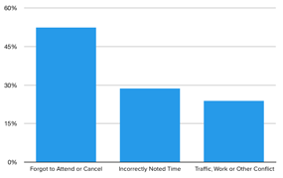Texting patients is now an expectation
Text messaging is one of the best ways to boost patient satisfaction, increase appointment consistency, and improve care compliance. Texting your patients should go beyond just appointment reminders. And yet, there is more technical complexity and risk with texting patients than other communication channels.

How to Text Patients Effectively
In this busy world, how are you supposed to get your patients to pay attention to what matters most: their health? How do you cut through the noise to remind patients about appointments, preventive care, and important announcements?
As a physician, you have a big advantage: you have a personal connection with your patients and clients; they know you and they trust you.
Email open rates are declining and phone call answers continue to plummet; however, one communication channel is steadily gaining momentum: text messaging.
Patients prefer text messages
It is no surprise that 96% of adults in the United States own a cell phone, according to Pew Research Center.
There is good reason to believe that texting will supersede talking over the phone, if it has not already. One survey found that 75% of Millennials and Generation Z prefer text messaging over talking.
In fact, upwards of 89% of consumers prefer to have access to texting their service provider. And, more importantly, 86% have notifications enabled on a smartphone device.
These preferences for text messaging extend to healthcare.

Source: https://mgma.com
Email and voicemail messages may not be seen by your patients. After all, spam is pervasive. Increasing numbers of robocalls and newsletters are pushing people elsewhere. Yet, your patients will likely see any text messages that your practice sends.
Text messages are effective
A comprehensive scientific literature review in 2018 found that “...nearly all the SMS-reminder studies helped improve patient medical compliance and appointment reminders”. Text message reminders were almost always reported to be easy to use, inexpensive, and low risk.
If you are not yet offering text messaging, you may be in the minority. According to another poll by MGMA, 68% of surveyed medical practices are using some form of text messaging to communicate with patients.
Even if you are using text messaging, you may not be using it for everything you could be. If you are struggling with no-shows, late arrivals, payment delays, or inconsistent appointment volume, text messaging can help.
Setting up text messaging for patients is more complicated than email or phone. That said, with just a bit of planning you can greatly improve patient engagement.
Read More from this Series:
Tips for texting patients
Getting patients enrolled in text messaging
How to text appointment reminders to patients
How to improve patient satisfaction via text messaging
Collect patient payment and verify insurance with text messaging
Get more recalls with patient text messaging